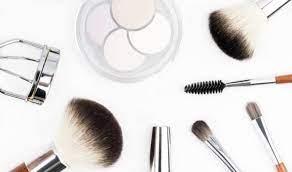
Essential FDA Regulations for a Cosmetic Brand
Planning to start a new cosmetic brand is exciting but being careful with what you are selling is also important. No one ever sells intending to harm their buyers, and FDA regulations are mandatory to ensure users’ safety.
This is a legal requirement that every Food, Drug, and Cosmetic brand must go through. Although FDA approval is not mandatory for cosmetics, FDA regulations are a must. You can get the regulations from an FDA regulatory consulting company.
Before making your items available to the buyers, here is what you need to know.
Important FDA Regulations for a Cosmetic Brand
These regulations are the top most crucial ones. However, you must contact an FDA consulting organization for proper rules.
Hybrid regulation
Cosmetics with properties that can cure or cause improvement in appearance fall under cosmetic and drugs categories. Thus, they must go through both regulations, of which the latter is much stricter.
Many personal care products come under this category, so they must comply with both regulations. Examples of such products are moisturizers, anti-aging, makeup with SPF, anti-dandruff shampoo, antiperspirants, etc.
Organic products
The FDA regulates organic termed products under NOP (National Organic Program) and the USDA (US department of agriculture). Although NOP was not created for cosmetics, it does apply to them.
These products are regulated in three ways: production, labeling, and handling. The labeling is based on the number of organic products in the item; otherwise, the term organic is not issued unless the NOP allows it.
Labels
FDA regulates the labeling of the product’s ingredients through the FPLA (Fair Packaging and Labeling Act). Under the FPLA, the FDA also requires the company to add a name and address along with the manufacturer’s, packers, and distributors’ addresses.
Safety ingredients
The FDCA (Federal Food, Drug, and Cosmetic Act) requires every cosmetic product and its ingredients to be validated for its purpose. According to the FDA, the product’s safety can be confirmed in two ways.
- Already proved toxicology data on each ingredient, formulation, and an existing similar product.
- Presentation of any additional toxicology and other tests that are suitable for considering the existing data and information.
Shelf-life requirements
The FDA needs the products to be safe for a significant amount of time for usage. The problem with a shelf life is the transfer of bacteria and fungi from fingers. The applicators also get exposed to germs often.
The manufacturers must determine the time before the product’s preservatives no longer prevent the bacteria and fungi from growing. This requires them to print the date of manufacture and expiration.
Some of the other regulations are:
- Cleanliness of manufacturing
- Import and export regulations and
- Future regulations
After the product goes through all the mandatory regulations, it is considered safe for the public to use. However, the manufacturer must still include warnings and possible side effects that it could cause under rare circumstances.
To sum this up
All cosmetic products must clear this FDA regulation before going out in the hands of the consumers. You must reach out to FDA regulatory consulting organizations to understand the guidelines properly.
If the cosmetic does not come under the drug regulations, it will only need to meet the requirements of the cosmetics. Usually, most makeup and skincare products go through both due to their curing properties.
Consult with your nearest FDA consulting firm today to meet all the necessary regulations.
